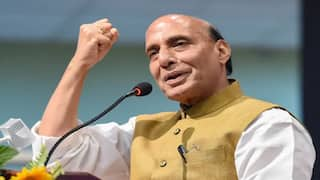Chest Pain Is Not A Sign Of Heart Attack Always. Here Is How To Spot The Difference
The commonest symptom of a myocardial infarction, or heart attack, is chest pain.

By Dr Ankur Phatarpekar
A heart attack, or in medical terms, a myocardial infarction (MI), is a very serious condition. The commonest symptom of a MI is chest pain. However, chest pain is not a symptom unique to a MI and can be due to many other diseases as well. This article will elaborate on how to recognize if your chest pain is due to a heart attack.
What are the features of chest pain due to a heart attack?
While chest pain is not a unique symptom in MI, certain features can give us a clue to a heart attack-related cause. Firstly, the pain will be sudden in onset. Patients describe it as a moderate to severe, tightening or squeezing pain felt behind the breastbone (which is termed “retrosternal”). The pain can spread to your neck, jaw, or down your left arm. A patient who gets a heart attack will also have other symptoms like nausea, vomiting, dizziness, and excessive sweating. The pain lasts for over 20-30 minutes.
Stable angina is a heart condition different from MI and is defined as chest pain that occurs with exertion and is relieved by rest. The character of the pain is like that of an MI, but it will reduce and fade away with rest. If you have stable angina symptoms and then develop chest pain at rest, it is more likely to be due to a heart attack.
What are the other diseases that cause chest pain?
Diseases of the respiratory system, gastrointestinal system and musculoskeletal system cause chest pain.
Respiratory system: Diseases of the respiratory system too can cause chest pain, for example pulmonary embolism. Chest pain due to respiratory causes is usually worsened by breathing. This feature is termed “pleuritic chest pain” and is not usually seen with a MI. Chest pain due to lung pathologies is also felt more on either the right or left depending on which lung is affected. Keep in mind, difficulty in breathing with chest pain is seen in both MI and respiratory diseases.
Gastrointestinal system: Gastritis and stomach ulcers too can cause chest pain. Gastric reflux can cause a retrosternal, burning type of chest pain that spreads to your neck. It can be associated with nausea, vomiting, and/or reflux of gastric acid to the throat. This pain is relieved by antacids or food, unlike an MI. Experts report that MI can be very similar to gastritis-type chest pain. Therefore, it is important to seek medical advice to identify the cause.
Musculoskeletal system: When you fracture your ribs or get inflammation of the joints between the ribs and breastbone you can develop chest pain. This pain is usually aching, and it worsens when you move around. You can also identify a tender point when you touch your chest, unlike in MI. This is called costochondritis.
Conclusion
While chest pain is a non-specific symptom some features can give us a clue to its underlying cause. However, we recommend seeking medical advice immediately if you have chest pain and suspect an alarming cause.
The author is Dr Ankur Phatarpekar, Director Cathlab and Interventional Cardiologist, Symbiosis Hospital, Mumbai
Check out below Health Tools-
Calculate Your Body Mass Index ( BMI )







































